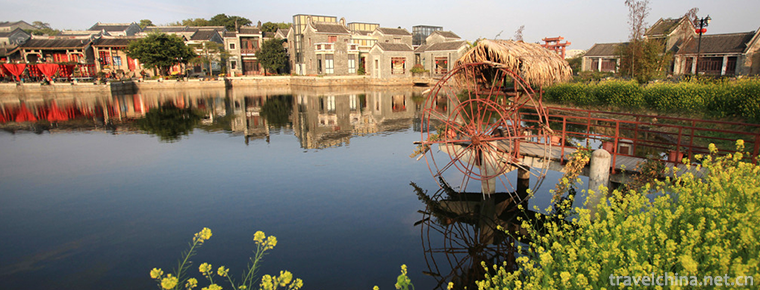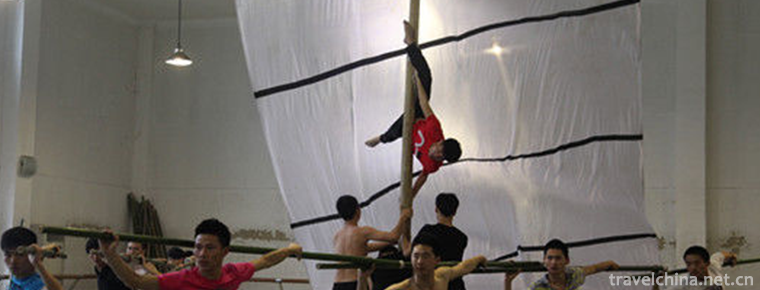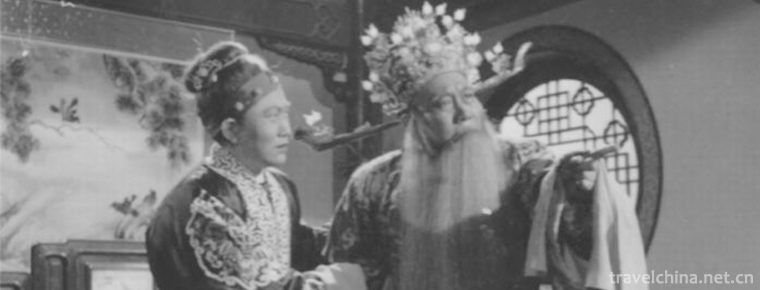Ailao Mountain
Ailao Mountain, located in the middle of Yunnan Province, China, extends south of Yunling Mountains. It is the boundary between Yunnan-Guizhou Plateau and Hengduan Mountains. It is also the watershed between Yuanjiang River and Amu River. Ailao Mountain is located in the Northwest - southeast, north of Chuxiong and south to Lvchun County, with a total length of 500 km. The highest peak of Ailao Mountain is at 3166 meters above sea level in the big rock peak in the town of pond town in Xinping County.
Ailao Mountain was formed in the Mesozoic Yanshanian movement period, to the Quaternary Himalayan movement period, large-scale uplift of the ground, river cutting sharply, forming a deep cut mountain landform. It is mainly composed of sand shale, limestone and various metamorphic rocks. The eastern part of the mountain is steeply cut along the fault zone, and the relative height difference is larger, while the west slope is more gentle.
Ailao Mountain is the boundary between the watershed of Yuanjiang River and Mojiang River, Yunnan-Guizhou Plateau and Hengduan Mountains. It is also the natural barrier of Yunnan-Guizhou Plateau climate and the South extension branch of Yunling Mountain. It originates in the south of Dali Prefecture and ends in the south of Honghe Prefecture. It is nearly 1000 kilometers long and generally over 2000 meters above sea level. There are 9 peaks above 3000 meters above sea level. The peak is 3166 meters.
Yuanyang terrace is located in the south of Ailao Mountain in Yuanyang County, Yunnan Province. It is a masterpiece left by Hani people from generation to generation. The terraced fields reclaimed by the Hani people in Yuanyang vary with the topography of the mountains, and the gentle slopes are large enough to reclaim the fields, the steep slopes are small enough to reclaim the small ones, and even the rocky crevices beneath the ditches are small enough to reclaim the terraced fields. Yuanyang terrace is a large-scale and magnificent terrace, which extends across the Honghe River, Yuanyang, Lvchun and Jinping Miao Yao and Dai Autonomous County. There are 170,000 Mu terraces in Yuanyang County alone, and it is the core area of the Hani terrace on the Red River. Yuanyang County is full of mountains, all terraces are built on the hillside, terraces gradient between 15 degrees to 75 degrees. In terms of a hillside, the highest level of terraced fields is 3000, which is rare in the landscape of Chinese and foreign terraces. Yuanyang Hani terrace mainly has three major scenic spots: Bada scenic spot including Qingkou, Quanfuzhuang, Ma Lizhai, Zhulu and other terraces of more than 14,000 acres, Laohuzui scenic spot including Mengpin, Dongpu, Mengzhong, Baoshanzhai and other nearly 6,000 acres of terraces, and many Yishu scenic spots including Doyishu, Aichun, Dawazhao terraces of more than 10,000 acres. So many terraces, in the vast forest, covered by the sea of clouds, constitute a magical magnificent landscape. These scenic spots are the core protected areas that are ready to declare the world heritage.
The main climatic functions of Ailao Mountain lie in: weak cold air is blocked by mountain body in winter, strong cold air has become the end of strong crossing after overturning the mountain body; the southwest warm and humid air flow is blocked by mountain body when it enters eastward, forming more precipitation in the West and south of Ailao Mountain than in the east, the temperature is higher than that in the east of the same latitude and elevation, and the winter cold wave enters. The number of times of invasion is also less than that of the East. Because of the large difference of mountain height, the climate distribution is obvious vertically. From the foot of the mountain to the top of the mountain, the climate is subtropical, middle subtropical, North subtropical, warm temperate, temperate and cold temperate. The unique mountain climate makes the vegetation have an obvious vertical distribution. The vertical distribution of the southwest slope begins from the Amu River valley: 1 100-1 800 meters above sea level is the Pu'er pine forest and monsoon evergreen broad-leaved forest belt, 1 800-2 200 meters is the Yunnan pine forest and semi-humid evergreen broad-leaved forest belt, 2 200-2 800 meters is the middle mountain wet evergreen broad-leaved forest belt, and 2 800 meters above the mountain top evergreen broad-leaved dwarf forest and shrub belt. The vertical series of vegetation on the northeast slope starts from the Yuanjiang River valley: 500-1000 meters above sea level is the Dry-hot Valley vegetation belt, 1000-2400 meters is the Yunnan pine forest and semi-humid evergreen broad-leaved forest belt, 2300-2900 meters is the middle mountain wet evergreen broad-leaved forest, and more than 2900 meters is the mountain top evergreen broad-leaved dwarf forest and shrub belt.
Ailao Mountain is the most complete area of biodiversity and the same type of plant communities in the world at the same latitude. There are 1 016 species of higher plants headed by the so-called plant living fossil Thoreau, including 15 species of national first-class protected plants Bole (Calyx bellifera), national second-class protected plants Aqua, Ginkgo biloba, Cycas castor teeth, Safflower manglietia, and many provincial-level protected plant species. It is known as an "Emerald" embedded in the crown of the plant kingdom.
Mount Ailao spans the tropics and subtropics, forming a "corridor" for animal migration from north to South and a "gene pool" for biological species. There are many rare birds and exotic animals living in Ailao Mountains. The first-class protected animals are Bengal tiger, green peacock, black gibbon, clouded leopard, Python and so on. In addition, there are a large number of birds and rare animals, such as Acacia, Solar Bird, King Cobra, Black Bear, and strange geological, atmospheric and hydrological landscape. Ailaoshan Nature Reserve was designated as a National Nature Reserve in 1988. It is located in the ridge of the northern and middle Ailaoshan Mountains. It is situated between 24 00 24 44 north latitude and 100 54 101 29 East longitude. It is 5 km wide, 102 km long, and covers an area of 820,000 mu. The area of wet evergreen broad-leaved forest in Zhongshan, which accounts for 66.3% of the protected area, is a rare wet evergreen broad-leaved forest area in Yunnan and even in China. Ailaoshan Nature Reserve is located in Chuxiong, Shuangbai, Jingdong, Zhenyuan and Xinping counties of Yunnan Province. It has 175,000 mu in Jingdong County of Puer City and 135,000 mu in Zhenyuan County of Puer City. In order to protect the Zhongshan subtropical moist evergreen broad-leaved forest ecosystem and black gibbons, green peacocks and other rare wild animal for the purpose of gray langur.
Ailao Mountain is rich in tourism resources. In Xinping County, Huayao Dai Town, there is Ailao Mountain National Nature Reserve on the back hill of Ailao Town in Cangsha. There are Nan'en Falls in Ailao Mountain National Nature Reserve, Shimenxia, Chama Old Road, Jinshan Primitive Forest and Tusi Fu (listed as "National Cultural Relics Protection Unit" in 2014). And other scenic spots.
Scenery
Ailaoshan main attractions Nanen Falls, Shimenxia, Chama Road, Jinshan Primitive Forest, Tusi Fu, the main peak Damoyan Peak, altitude 3166 meters. The natural landscape of Da Xue Pan Shan and the international migratory bird protection area, such as the tiwshan mountain, the big (small) cap mountain, and so on. There are two dams in the nature reserve and the artificial reservoirs in Xujiaba. The Xu Jiaba reservoir is full of wooded scenery, beautiful scenery and cool climate. Among them, Yunnan hemlock is more famous, its height is about 25-35 meters, and its diameter is 25-45 centimeters thick. All kinds of pteridophytes and moss trees are covered with pendant trees. At dusk and dusk, apes roar and birds sing, moose and elk drink at the water's edge, like a map of mountains, rivers, birds and beasts. It is an excellent base for human beings to study ecology, biology, soil, climate, hydrology, geography and other excellent places for tourism and summer vacation.












-
Harbin Sun Island Scenic Area
Sun Island Scenic Area is located on the North Bank of Songhua River in Harbin City, Heilongjiang Province, with a total area of 88 square kilometers, of which the planned area is 38 square kilometers.
Views: 119 Time 2018-12-05 -
Hometown of Zhu De
Zhude Hometown Scenic Spot: National AAAAA Tourist Scenic Spot, National Key Cultural Relics Protection Units, National Patriotic Education Demonstration Base, National Anti-corruption Education Base,.
Views: 266 Time 2018-12-12 -
Shanghai Ocean Aquarium
Shanghai marine aquarium is located at 1388 Lujiazui Ring Road, Pudong New Area, Shanghai, China, next to the Oriental Pearl Tower. Singaporean Xingya Group and Chinese Poly Group have jointly.
Views: 186 Time 2018-12-19 -
Oriental Ruihai International Hot Spring Resort
Oriental Ruihai International Hot Spring Resort is a hot spring real estate project jointly invested by Shandong Sanzhong Group and Shandong Xingsheng Mining Group, with a total investment of 300 mill.
Views: 161 Time 2018-12-20 -
Lingnan Impression
Lingnan Impression Park is located in the south of Guangzhou University Town (Xiaoguwei Island). It covers an area of 16.5 hectares. It is a tourist attraction that gathers sightseeing.
Views: 416 Time 2019-02-03 -
Ming Xiaoling Mausoleum
The Ming Xiaoling Tomb is situated at the south foot of Zijinshan Mountain in Xuanwu District, Nanjing, under Dulongfu Playing Pearl Peak. It is adjacent to Zhongshan Tomb in the East.
Views: 151 Time 2019-02-07 -
Zhangye Great Buddhist Temple
The Great Buddha Temple was built in the first year of Yongan, Xia Dynasty (1098), formerly known as the Kaye Tathagata Temple, in the ninth year of Yongle, Ming Dynasty (1411), and in the seventeenth.
Views: 171 Time 2019-03-16 -
Ewenki Folk Songs
Ewenki folk songs are beautiful and beautiful, with unique style. People are improvised and sing improvised lyrics. Pastoral songs and hunting songs show the brave and simple.
Views: 282 Time 2019-04-28 -
Lishui Shipmans Chant
Lishui Shipman's Chant is a unique work chant transformed from local minor. It is a kind of traditional folk music with strong rhythm, which reflects the hard life of the shipmen and the work scene in.
Views: 126 Time 2019-05-13 -
Brewing Techniques of Maotai Liquor
Maotai liquor brewing technology, the local traditional handicraft technology of Maotai Town, Zunyi City, Guizhou Province, is one of the national intangible cultural heritage..
Views: 157 Time 2019-05-29 -
Hunan Opera
Hunan Opera, is one of the traditional operas in Hunan Province. It is popular in Changsha and Xiangtan, mainly in the twelve genera of Changsha Mansion, namely Changsha, Shanhua, Xiangyin, Liling, Xi.
Views: 231 Time 2019-07-03 -
Evolution of Chengdu Giant Panda Base
Chengdu Giant Panda Breeding Research Base is established on the basis of raising, treating and breeding giant pandas in Chengdu Zoo. In the 1980s, Fargesia FRIGIDA in Qionglai mountains blossomed and died. Some giant pandas were rescued and concentrated in Chengdu Zoo for lack of food and hunger..
Views: 105 Time 2020-12-13











